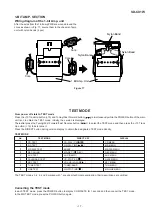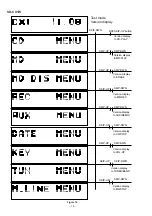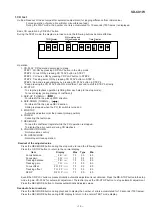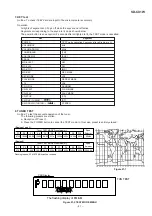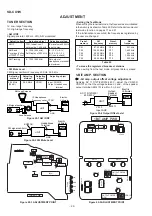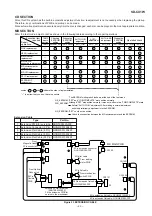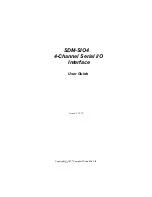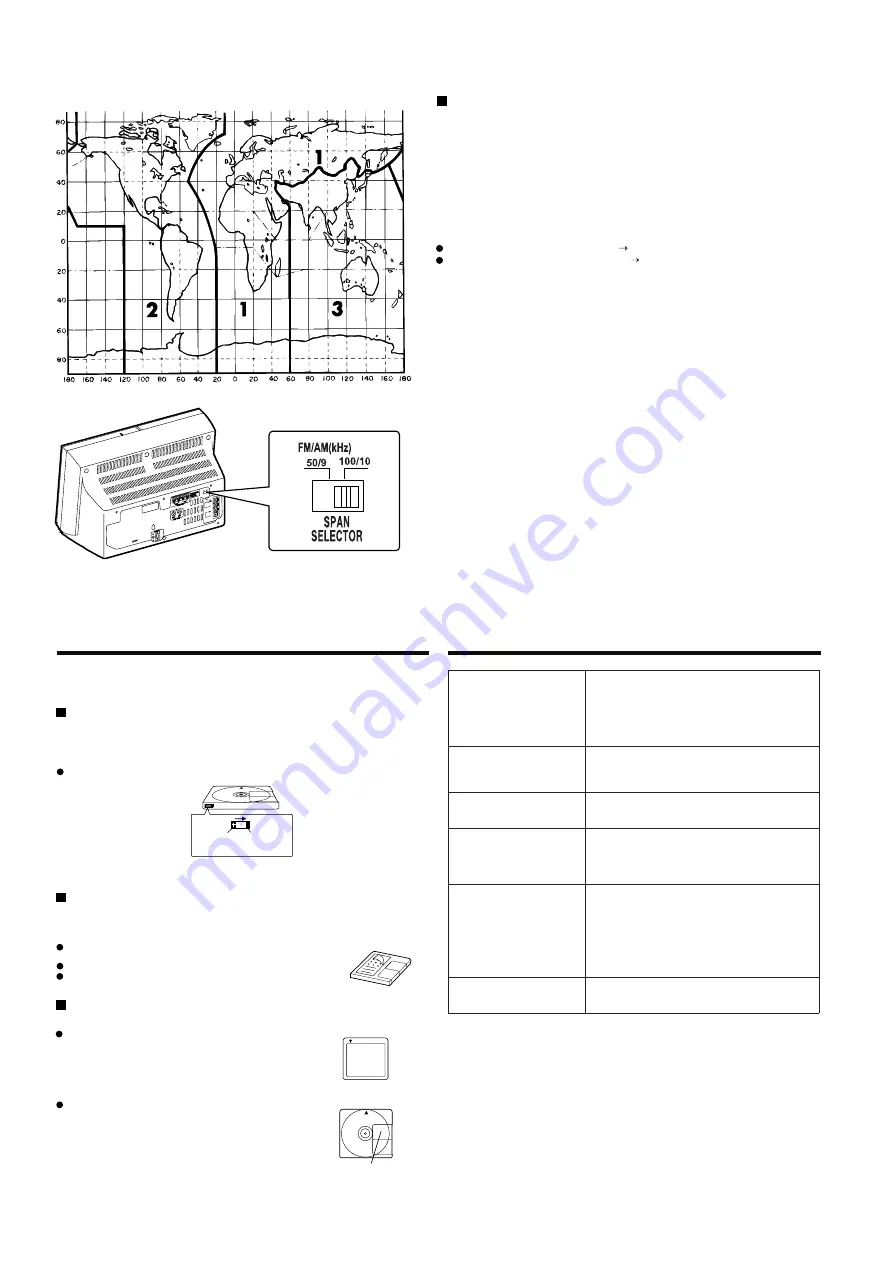
SD-CX1W
– 8 –
Setting the FM/AM span selector
The International Telecommunication Union (ITU) has established that member coun-
tries should maintain either a 100 kHz or a 50 kHz interval between broadcasting fre-
quencies of FM stations and 10 kHz or 9 kHz for AM station. The illustration shows
the 50/9 kHz zones (regions 1 and 3), and the 100/10 kHz zone (region 2).
Before using the unit, set the SPAN SELECTOR switch (on the rear panel) to the
interval (span) of your area.
To change the tuning zone:
1
Unplug the AC power lead from the AC socket.
2
Set the SPAN SELECTOR switch (on the rear panel) as follows.
For 50 kHz FM interval (9 kHz in AM) 50/9
For 100 kHz FM interval (10 kHz in AM) 100/10
3
Plug the AC power lead to the AC socket.
Caution:
This operation will erase all data stored in memory including clock, timer settings,
tuner preset, and CD or MiniDisc programme.
What is a MiniDisc ?
The disc is stored in a cartridge. You can handle it easily without worrying about dust, fin-
gerprints, etc. However, dust entering the opening of the cartridge, dirt on the cartridge,
warping, etc. may cause malfunctions. Please note the following.
To prevent recorded MiniDiscs from being
erased accidentally
Slide the accidental erase prevention tab, located on the side of the MiniDisc, in the direc-
tion indicated by the arrow.
The MiniDisc is then be protected against accidental erasure.
To add a recording to such a MiniDisc, slide the accidental erase prevention tab back to its
original position.
Helpful tip when attaching a label
When attaching a label to a MiniDisc cartridge, be sure to note the following. If the label is
not attached properly, the MiniDisc may jam inside the unit and it may not be possible to
remove it.
Types of discs
MiniDisc System Limitations
If the label peels off or partially lifts away, replace it with a new
one.
Do not put a new label on top of an existing one.
Attach the label only in the specified location.
There are two types of discs: playback-only and recordable types.
Playback-only MiniDisc:
This type of MiniDisc is used for commercially available
prerecorded music. This is the same kind of optical disc as
CDs. Playback is performed using an optical pickup. (Re-
cording and editing are not possible.)
A Shutter will be used on only
one side (back).
Recordable MiniDisc:
This is a "raw disc" on which recording can be performed.
A magneto optical disc is used. Recordings are made us-
ing a laser and magnetic field. Repeated recording is pos-
sible.
Shutters will be used on both
sides.
Recordable
Recording
prevented
Even if the maximum recording
time of a MiniDisc has not been
reached, "TOC FULL" may be
displayed.
In the MD system, the delimiter of the recording area on
a MiniDisc is programmed in a TOC. If partial erasing,
recording and editing are repeated several times, TOC
information will fill up, even though the number of tracks
has not reached the limit (255 tracks), and further re-
cording will be impossible. (If you use the all erase func-
tion, this MiniDisc can be used from the beginning.)
Even if the maximum recording
time of a MiniDisc has not been
reached, "DISC FULL" may be
displayed.
If there is any flaw on the MiniDisc, that part is automat-
ically excluded from the space available for recording.
Therefore, the recording time becomes shorter.
Even if several short tracks are
erased, the remaining recording
time may not show an increase.
When the remaining recording time of a disc is dis-
played, short tracks less than 12 seconds long may not
be included in the total.
Two tracks may not be com-
bined in editing.
For MiniDiscs on which repeated recording and editing
operations were performed, the COMBINE function may
not work. A track recorded from a CD (digital recording)
and a track recorded from a radio or other equipment
(analogue recording) cannot be combined.
The total of the recorded time
and time remaining on a disc
may not add up to the maximum
possible recording time.
A cluster (about 2 seconds) is normally the minimum
unit of recording. So, even if a track is less than 2 sec-
onds long, it will use about 2 seconds of space on the
disc. Therefore, the time actually available for recording
may be less than the remaining time displayed.
If there are scratches on discs, those sections will be au-
tomatically avoided (no recording will be placed in those
sections). Therefore, the recording time will be reduced.
If recorded tracks are fast re-
versed or fast forwarded, the
sound may skip.
A MiniDisc which has been recorded or edited repeated-
ly may skip during fast reverse or fast forward.
Summary of Contents for SD-CX1W(BL)
Page 114: ...SD CX1W 15 M E M O ...
Page 115: ...SD CX1W 16 M E M O ...

















